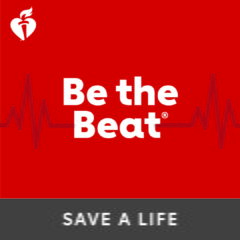
In the United States, approximately 356,000 out-of-hospital cardiac arrests occur each year and less than 10% of these victims survive¹. Fortunately, survival rates can be significantly increased by a simple, yet lifesaving technique – CPR (Cardiopulmonary resuscitation).
Since cardiac arrest can happen to anyone, at any time, without warning, it is important that we educate and raise awareness as this knowledge can save lives. When performed correctly and immediately, CPR can double or even triple a victim’s chance of survival. In fact, the American Heart Association states that immediate CPR can increase a victim’s chance of survival by up to 40%².
February is American Heart Month and this year’s theme is “Be The Beat.” The goal is to encourage people to learn Hands-Only CPR. This is a technique that involves chest compressions only and is just as effective as traditional CPR in many cases. The American Heart Association recommends that everyone should know how to perform Hands-Only CPR as it can be the difference between life and death for someone experiencing cardiac arrest. Hands-Only CPR is a natural introduction to CPR and the American Heart Association encourages everyone to learn conventional CPR as a next step.
#BeTheBeat this February! Access graphics, fact sheets and printable resources.
 CPR can be the difference between life and death for someone experiencing cardiac arrest. By learning Hands-Only CPR, you can help to save a life and make a difference in your community or save the life of someone you love.
CPR can be the difference between life and death for someone experiencing cardiac arrest. By learning Hands-Only CPR, you can help to save a life and make a difference in your community or save the life of someone you love.
American Heart Month is the perfect time to learn CPR and to focus on your cardiovascular health. “Be the Beat” and learn CPR today. Watch the 90-second Hands-Only CPR instructional video and share it with your patients and the important people in your life.
National Wear Red Day is Friday, February 3! Help raise awareness about cardiovascular disease and help save lives.
Sources:
